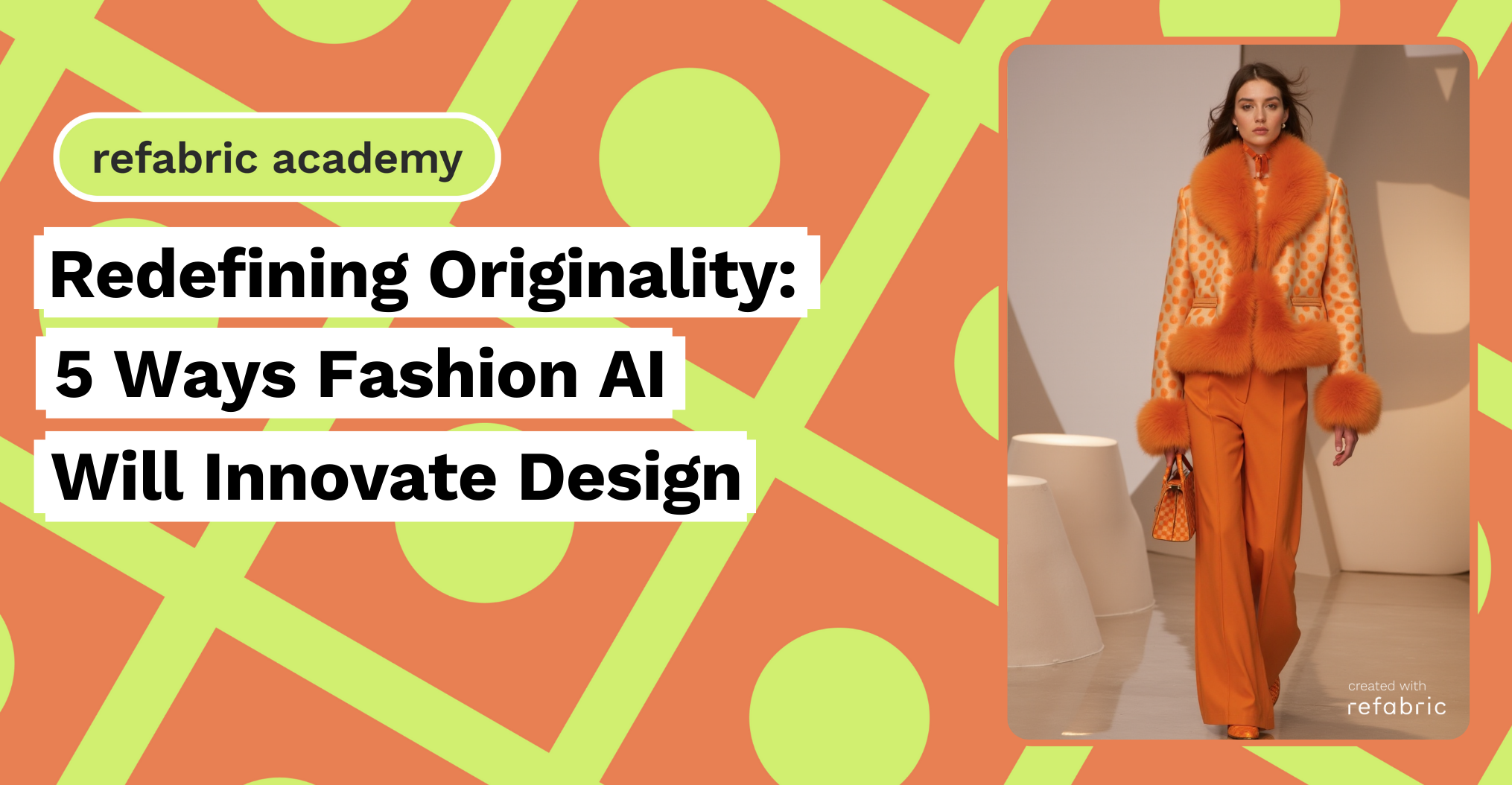Originality is the key aspect of fashion design, and fashion AI has been criticized for its reliance on large databases fed into algorithms. While traditional fashion design requires creativity and deep knowledge of the history of garments, fabrics, and patterns to turn inspiration into original designs, fashion AI draws from pre-existing data. This has led to critiques regarding its ability to generate truly innovative work. Despite producing realistic outcomes—whether visual designs, garments, or text—the authenticity of AI-generated results has been questioned. So, we ask: Is fashion AI truly capable of originality in design? Let’s explore five compelling reasons that will help us discover the uniqueness of AI fashion design.
1.Fashion AI as a designer’s companion, not a replacement
Fashion AI is a great tool to amplify designs and get inspiration from. It is a companion that could help designers through their design journeys, and provide unique options that could help them a step further. By collaborating with fashion AI, designers gain access to diverse sources of inspiration they may not have considered, leading to truly innovative outcomes. For example, AI-generated patterns or combinations of fabrics can provide fresh ideas, while designers maintain control over the final vision. In this sense, fashion AI augments creativity by providing a new perspective. By that, though AI is revolutionizing the fashion industry, designers’ “original creativity” will always be surpassed by rapidly developing technology.
2.Inspirational, just like humans
It is a common mistake to think that fashion AI directly copies designs from similar designs. While this is not the case, AI design takes inspiration from a dense database of designs, colors and patterns, which get more and more original with large datasets. Instead, it creates new data through probability distributions using a sophisticated mathematical idea without copying.
There are problems with the claim that “AI-generated fashion can never be original,” the primary one being that people can draw inspiration from preexisting sources as well. When we create art, we construct mood boards, incorporate site references, and unconsciously draw inspiration from everything around us. Perhaps there’s no way not to. Designer Walter Van Beirendonck stated that “copying is nothing new” back in 2020. Although it’s taboo to do so publicly, absorbing inspiration is a necessary component of all creative endeavors, including fashion.
3.Generative AI: The New Frontier for Customization
Generative AI’s ability to personalize and customize designs offers endless possibilities for originality. Through AI fashion design tools, customers can now play an active role in the creation of their garments, tweaking and personalizing designs to match their individual tastes. This collaborative approach allows for greater customer engagement, but more importantly, it leads to highly individualized fashion pieces that are unique to each wearer. The intersection of AI with user input pushes boundaries, resulting in garments that are not only original but deeply personal, bringing a new layer of authenticity to fashion.
A variety of designers participating in New York Fashion Week were questioned by Vogue Business about the place, if any, of artificial intelligence (AI) in the creative process of fashion design. While some designers chose not to respond, the majority of designers expressed interest and openness, and many of them also expressed a fondness for the tried-and-true analogue techniques. AI fashion design is a great way to tap into customized designs where assisted collaboration might help designers come out from their shells, and make bolder decisions that might elevate their take on trendy aesthetics.
4.Fashion AI Pushes the Boundaries of Human Imagination
One of AI’s most compelling advantages is its ability to push creative boundaries. It can process and analyze vast amounts of data in ways that might be too complex for human designers. As a result, AI can generate novel combinations of materials, colors, and styles that go beyond traditional human creativity. These AI-generated designs often blend unexpected elements, creating garments that are fresh and groundbreaking. While human designers are naturally influenced by trends and personal experiences, fashion AI can explore uncharted territory, opening the door to new realms of creativity.
5.Efficiency and Innovation in Iteration
AI’s capacity for rapid design iteration is a game changer in the fashion world. What might take a human designer hours or days to sketch and refine, AI can accomplish in a matter of minutes. This speed allows designers to experiment with multiple variations of a concept quickly, exploring different ideas and refining designs without wasting time or resources. The fast pace of AI-generated iterations ensures that designers can stay ahead of trends and continuously innovate, helping brands maintain a competitive edge while reducing the time to market.
